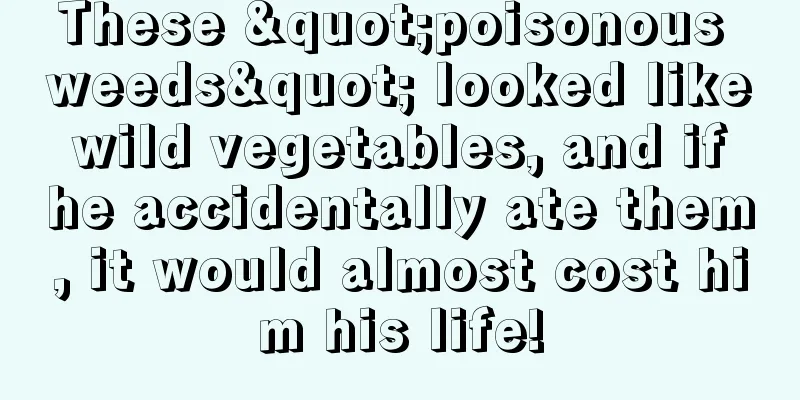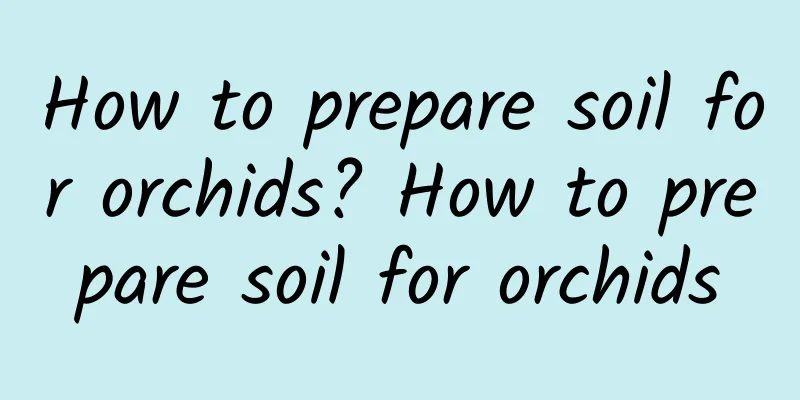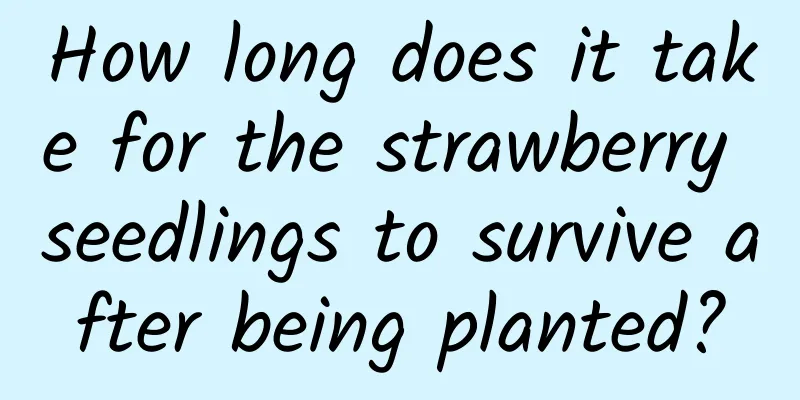These "poisonous weeds" looked like wild vegetables, and if he accidentally ate them, it would almost cost him his life!

Xanthium sibiricumDistribution: Grown in fields, roadsides and depressions. It sprouts in March and April, and the seedlings look like the vegetables we eat every day - bean sprouts. Toxicity: The whole plant is poisonous. Among them, young sprouts and seeds are the most toxic and can cause death if accidentally ingested. (Bean sprouts) Symptoms of poisoning:After poisoning, the patient will experience general weakness, dizziness, nausea and vomiting. Severe cases can cause respiratory failure and death. Poison HemlockDistribution: Grows in wet places, such as by the water or ditch in swamps. Toxicity: The leaves are like the celery leaves we often eat. The whole plant has a foul smell, and the flowers are the most toxic. (celery) Symptoms of poisoning:Symptoms include blisters on the lips, nausea, vomiting, followed by headache, general weakness, and loss of ability to move. (Poison Hemlock) ArisaemaDistribution: Grown under forests, thickets or grasslands. Its root is similar to ginseng. Toxicity: The whole plant is poisonous. Symptoms of poisoning:Chewing raw Arisaema can cause numbness, swelling and pain in the tongue, throat and oral cavity, and even slow breathing and suffocation. Husband SilverDistribution: Grown on hillsides, grasslands and roadsides. Also known as wild carrot and cnidium monnieri. Toxicity: Both leaves and roots are highly toxic. Symptoms of poisoning:Symptoms of poisoning are similar to those of poison hemlock, with subsequent ultraviolet sensitivity, and death from respiratory failure in large doses. Huahua reminds: These wild vegetables must not be touched! In addition to these types of vegetables that should not be touched, there is another type of vegetables - photosensitive wild vegetables. If people with photosensitivity eat them and then expose them to strong light, they will experience redness, swelling, and rashes on the exposed skin, accompanied by obvious itching, burning or stinging symptoms. Shepherd's PurseWild shepherd's purse can be seen everywhere in fields, roadsides, and courtyards. The whole plant of shepherd's purse can be used as medicine, and the stems and leaves can be eaten as vegetables. purslanePurslane is commonly found in fields and roadsides. The tender stems and leaves can be used as vegetables. Gray vegetableGray vegetable mainly grows in fields, on the edge of fields, on roadsides, in front of and behind houses, etc. The seedlings and tender stems and leaves of the vegetable are edible, delicious, tender and nutritious. The above three wild vegetables are relatively common photosensitive foods. For safety reasons, friends with photosensitive constitutions should avoid eating them as much as possible. Recently, news of people accidentally eating poisonous wild vegetables has become common. I hope all flower lovers will pay special attention to safety when going out for fun. Picking wild vegetables can add fun to your journey, but you must carefully identify the wild vegetables you pick to avoid adding unpleasantness to your journey. Today's little popular science on wild vegetables ends here. I hope Huahua’s popular science is helpful. If you think the article is good You can share it with your friends~ |
<<: The efficacy and function of palace lantern longevity flower
>>: Can Gardenia be soaked in water?
Recommend
How to propagate jade tree by cuttings
1. Leaf cuttings The leaf cutting method is very ...
The efficacy and function of hawthorn, what should not be eaten with hawthorn
1. The efficacy and function of hawthorn 1. Help ...
Is it better to give red roses or lilies for Christmas?
First meeting - Christmas lily If Christmas is ch...
How to grow green radish in winter
1. Lighting This plant is relatively shade-tolera...
If you plant flowers in the right place, you can gather wealth and ward off disasters. If you plant them in the wrong place...
Flowers for the living room Taboos for living roo...
Ginkgo tree price, Ginkgo tree pictures
1. Ginkgo tree price The price of ginkgo trees is...
When can I repot asparagus fern?
Asparagus fern is also known as cloud pine, aspar...
Does Begonia need sunlight?
Need some sun? Begonia, like most plants, loves l...
How to care for daffodils after they bloom
1. Bury in the soil After it finishes blooming, t...
When do lilies bloom?
How long does it take to bloom after planting? Ha...
Lily flower language, lily meaning
1. The meaning of lily Lilies come in many colors...
What is the most effective way to cure root-knot nematodes?
Root-knot nematodes are the most serious pests th...
Coconut's growing environment and local conditions
Coconut Growth Environment and Conditions Coconut...
Ginger flower pest control
Ginger flower pest control Bacterial canker, rot ...
The 20-meter-tall Monstera king has climbed all over the neighbor's wall. What powerful material did he use?
How to grow Monstera, it will sprout new leaves i...









